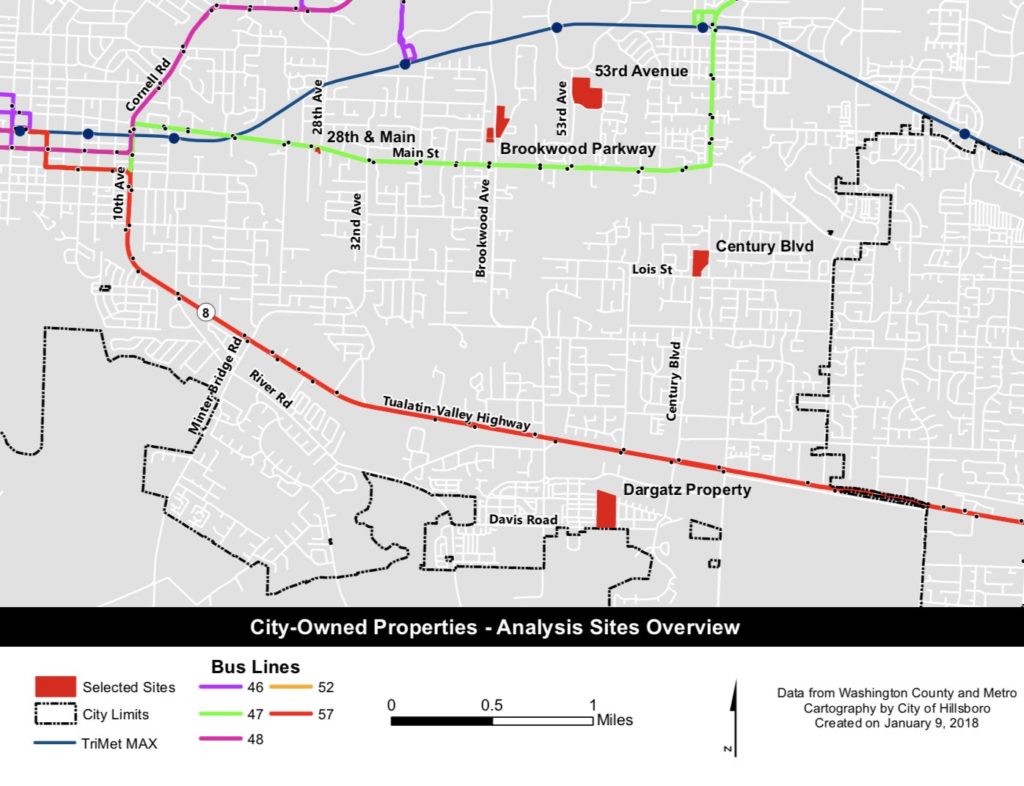The four tools Hillsboro plans to use to increase affordable housing options, explained
The City of Hillsboro has four main tools to combat homeless, according to a report commissioned by the city and put together by ECONorthwest and presented to City Council this week. Those four choices are:
- Reduced parking requirements to incentivize new construction
- Participation in tax abatement programs to help preserve and develop new regulated affordable housing
- Opportunities for land donations to support new construction
- Use of general fund dollars as direct contributions to affordable projects – both for new construction and preservation of regulated and naturally occurring affordable housing.
Each of these potential tools have pros and cons according to Senior Project Manager Chris Hartye, who outlined the tools during a work session before the March 6 city council meeting. Here’s a quick summary of each.
Tool One: Reduced Parking Requirements
Parking makes up a surprisingly large chunk of the cost of housing, so lowering requirements from the current 1.5 spots per unit required in most of the city could encourage the development of affordable housing. The requirement could be brought down to .75 parking spots per unit, which is already true in Amberglen and parts of downtown. To quote Hartye’s memo to City Council:
As parking was cited as one of the more expensive parts of project development, especially for higher density projects with structured parking, reducing minimum requirements would positivity impact development feasibility through construction cost savings.
The downside should be obvious to anyone who lives in a crowded part of the city: spillover parking. Just because affordable units only offer .75 parking spots per unit doesn’t mean people with multiple cars won’t live there, meaning nearby neighborhoods could see a surplus of additional cars on the street.
The city plans to investigate the question in depth this summer, but Hartye said initial studies looking at nearby jurisdictions suggest that spillover parking effects are “slim” in areas close to public transit.
Councilor Anthony Martin spoke in favor of this tool during the meeting.
“I think we should keep looking at all this,” said Martin. “I think it’s going to show that 1.5 spaces is not necessary all the time.”
Tool Two: Tax Abatement
The second option, lowering or eliminating taxes for affordable housing units, can encourage new affordable housing options and help support existing ones. Quoting Hartye’s memo again:
As reported in the findings, a tax exemption for nonprofit owned affordable housing increases development feasibility of low-income units in new development projects and reduces the costs of operating existing affordable properties over time. This provides benefit on both the construction and preservation of regulated affordable housing
The downside: such tax breaks mean less revenue for the city and other entities, including the already-struggling school district.
Tool Three: Giving Away Land
The third option, donating city-owned land to nonprofits willing to build affordable housing, is a great way to encourage new development, because land is a big part of the cost of building housing. Hartye’s memo:
…eliminating land costs can be very helpful in improving affordable housing development feasibility. Land contributions also have the benefit of allowing for more control of where and when new affordable units are constructed, and the opportunity to partner with developers to potentially achieve other City policy goals such as design elements and compatibility with surrounding neighborhoods.
The city has investigated this option, and is considering the following sites:

The downside here: land the city owns is typically owned because the city wanted to do something else with it, such as building a park. Give the land away and those projects are no longer possible. The city also has to consider the administrative costs of finding partners and transferring the land.
Tool Four: Using City Funds for Grants and Loans
The forth tool is using city money to help fund projects, either by giving it away or lending it to nonprofits looking to build affordable housing. Hartye’s memo again:
City General Fund dollars set aside for affordable housing can be used for both development and preservation through loans, direct grants or other types of investments in affordable housing outcomes. City investment can have significant impact on project feasibility, especially as the market for Low Income Housing Tax Credits has fluctuated and the increase in development costs is creating financing gaps for affordable housing developers.
The main downside here is the administrative cost of finding appropriate partners. Such funding also tends to come up late in the process of planning such housing, meaning the city would have very much input about the shape of the projects.
The City Plans to be Opportunistic
City Manager Micheal Brown stated multiple times throughout the meeting that Hillsboro plans to use all these tools whenever possible.
“We’re opportunistic,” Brown said mulitiple times.
Mayor Steve Callaway stressed this is an issue the city is spending time on.
“There really is a strong sense of urgency,” said Callaway. “We continue to hear about it, we continue to witness it, and I want to make sure that this continues to be on the front burner for us.”
Callaway also pressed city employees to look into ways the city can encourage home ownership.
Read More
- Full packet for the March 6 City Council Meeting, which includes more details about the information outlined here.
- Housing for all should be the goal, editorial from the Hillsboro Tribune
